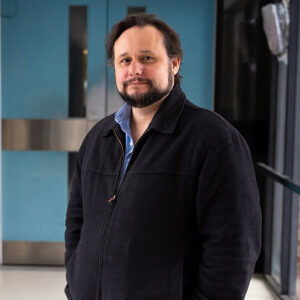
Adam Muzzin
"We are very excited to receive such a big allocation on the world's premier telescope," said Muzzin, who will be collaborating with York graduate students Sunna Withers and Ghassan Sarrouh on the project. "JWST is the most powerful telescope of all time and is already revolutionizing how we study our universe. It was built to find the first stars and galaxies and to help us understand the origins of our universe. Our new program will explore something no one has ever been able to see before."
Muzzin's program is entitled "JWST in Technicolor: Finding and Mapping the Most Extreme Star Forming Galaxies in the Epoch of Reionization with Medium and Narrow Bands" and his team will be using JWST to search for very distant dwarf galaxies during the time when star formation was just "turning on" in the universe. It is thought that much of the star formation in the universe occurred in these dwarf galaxies.
When distant galaxies were forming stars, much of their light came out at one wavelength (so-called "emission lines"), making them very bright in specific medium and narrow bands. For the first time ever, his team will point the infrared filters of JWST, as well as of the Hubble Space Telescope, at a single piece of sky and capture a "technicolor" dataset.
"By getting pictures in a full suite of these filters, we can identify how many such galaxies are out there and what their contribution was to the star-formation budget of the universe," said Muzzin.
Muzzin is a member of the Canadian instrument team that built the Near-Infrared Imager and Slitless Spectrograph (NIRISS) on JWST, and he leads one of the working groups on the large Canadian NIRISS Unbiased Cluster Survey project. Since the telescope launched into space in December 2021, he and his team have already used captured data to make exciting discoveries about stars and galaxies from the early universe.
The project includes collaborators from the University of Toronto (Canada), Kyoto University (Japan), University of Ljubljana (Slovenia), University of Copenhagen (Denmark), St. Mary's University (Canada), Columbia University (USA), Tufts University (USA), Space Telescope Science Institute (USA), and NRC Herzberg Institute of Astrophysics (Canada).
This story was originally featured in YFile, York University's community newsletter.













